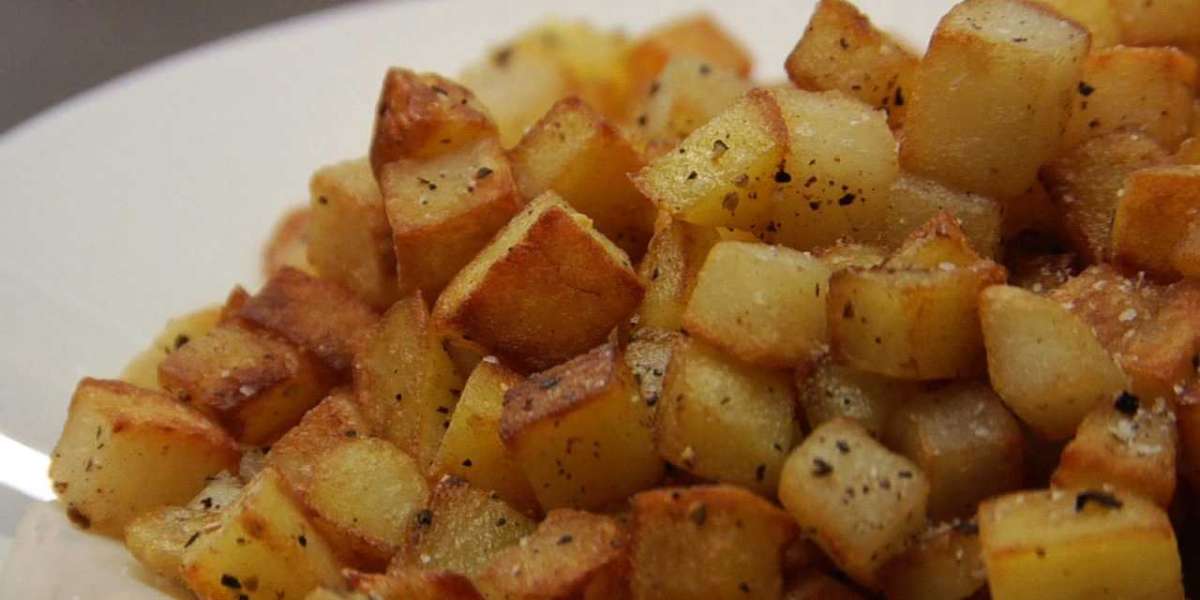Frozen potato snacks are a popular, convenient option for many households. Whether you're reaching for frozen French fries, tater tots, hash browns, or other potato-based snacks, they provide a quick solution for those who need an easy meal or side dish. But just how long do frozen potato snacks last in the freezer before they lose their quality or become unsafe to eat? In this analysis, we will dive deep into the shelf life of frozen potato snacks, factors that affect their longevity, and how to properly store them for the best results.
For additional resources on frozen snacks, visit ChillFill Foods, a reference point for frozen food products.
Shelf Life of Frozen Potato Snacks: The Basics
Frozen potato snacks, when stored properly, can maintain their best quality for an extended period of time. The freezing process helps preserve the food by slowing down the activity of bacteria, yeast, and molds that cause food to spoil.
Typically, most frozen potato snacks can last between 8 to 12 months in the freezer if they are stored at a consistent temperature of 0°F (-18°C) or lower. This timeframe is considered optimal for maintaining the best texture, flavor, and nutritional value of the product. However, they may still be safe to eat beyond this period, though there could be a noticeable decline in quality.
Here’s a general breakdown of common frozen potato snacks and their expected freezer shelf life:
- French Fries: 10-12 months
- Tater Tots: 8-10 months
- Hash Browns: 8-12 months
- Potato Wedges: 10-12 months
Factors That Affect the Longevity of Frozen Potato Snacks
While frozen foods are known for their extended shelf life, there are several factors that can influence how long frozen potato snacks last in your freezer:
- Packaging: The packaging of frozen potato snacks plays a critical role in their preservation. If the packaging is airtight and well-sealed, it prevents freezer burn and moisture loss, ensuring that the snack remains fresh for a longer period. Vacuum-sealed or factory-sealed packages tend to preserve frozen snacks better than loosely wrapped ones.
- Freezer Temperature: The longevity of frozen potato snacks is directly related to the temperature at which they are stored. For optimal results, it's recommended that frozen foods be kept at a constant temperature of 0°F (-18°C). Fluctuations in freezer temperature can cause partial thawing and refreezing, which leads to freezer burn, affecting the texture and taste of the product.
- Freezer Burn: Freezer burn is one of the most common issues that can impact the quality of frozen potato snacks. It occurs when air comes into contact with the food, causing dehydration and oxidation, which leads to dry spots and a tough, leathery texture. While freezer-burned potato snacks are still safe to eat, the taste and texture may be less enjoyable.
- Handling: Proper handling during transportation and storage can also impact the longevity of frozen potato snacks. If they are left out at room temperature for extended periods or are exposed to repeated thawing and freezing cycles, they are more likely to lose quality quicker.
How to Maximize the Shelf Life of Frozen Potato Snacks
While the recommended shelf life for frozen potato snacks is around 8 to 12 months, there are ways to extend this period and preserve their quality:
- Proper Storage: Always store frozen potato snacks in airtight, moisture-proof packaging. If the original packaging is opened, transfer the snacks to a resealable plastic bag or vacuum-sealed container to reduce exposure to air and moisture.
- Avoid Overcrowding: Freezers that are overly packed can lead to poor air circulation, which affects the temperature consistency. Ensure that there is enough space in your freezer for air to circulate freely around the frozen snacks.
- Label and Rotate: Label frozen potato snacks with the date of purchase or the date they were placed in the freezer. Use the "first in, first out" (FIFO) principle to rotate older items to the front so that they are used before newer purchases.
- Check for Signs of Freezer Burn: While freezer burn doesn’t make food unsafe to eat, it does impact the taste and texture. If you notice freezer burn, you can trim the affected areas before cooking the snack to improve its flavor.
Signs Frozen Potato Snacks Have Gone Bad
Frozen potato snacks, like any food, can eventually go bad if stored improperly or for too long. Here are some signs that your frozen potato snacks may no longer be suitable for consumption:
- Unpleasant Odor: If you detect a sour or strange odor upon opening the package, it's a clear sign that the food has spoiled and should be discarded.
- Ice Crystals: While a small amount of ice is normal in frozen food packaging, large ice crystals can indicate that the snack has been partially thawed and refrozen. This can lead to a mushy texture when cooked.
- Color Changes: If the potato snack has developed a greyish or off-color appearance, it may be a sign that the quality has deteriorated.
- Change in Texture: If the frozen potato snack has become excessively hard, dry, or has an unusual texture, it may be a result of freezer burn or spoilage.
Can You Refreeze Potato Snacks After Thawing?
Refreezing potato snacks after they have been thawed is generally not recommended, as it can significantly affect the texture and quality of the product. When you refreeze food, the moisture inside the snack forms larger ice crystals, leading to freezer burn. If the snack has been thawed in the refrigerator and hasn’t been out of the fridge for more than 24 hours, it can technically be refrozen, but the quality may be compromised.
For best results, try to use thawed potato snacks as soon as possible to preserve their flavor and texture. Cooking the potato snack before freezing it again can also help retain some of the quality.
Health and Safety Considerations
Frozen potato snacks, when stored and handled properly, are safe to consume for long periods. However, it’s important to keep food safety guidelines in mind to avoid any potential health risks:
- Keep Freezer at the Right Temperature: Ensure your freezer is set to 0°F (-18°C) or below. Regularly check the temperature with a thermometer to ensure it is consistent.
- Do Not Refreeze Thawed Food: Avoid refreezing potato snacks that have been left out at room temperature or have been thawed for more than a day, as this increases the risk of bacterial growth.
- Cook Properly: Always cook frozen potato snacks according to the package instructions to ensure they reach the correct internal temperature for safe consumption.
Conclusion
Frozen potato snacks can last between 8 to 12 months in the freezer if stored properly, retaining much of their quality in terms of taste and texture. Factors like freezer temperature, packaging, and handling can greatly impact the shelf life. By using proper storage techniques and keeping your freezer at a constant temperature, you can maximize the shelf life of your frozen potato snacks and ensure they remain delicious. For more information on frozen foods, visit ChillFill Foods.








